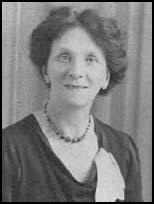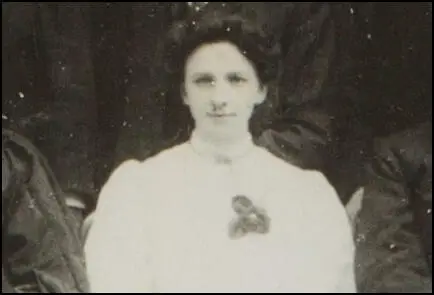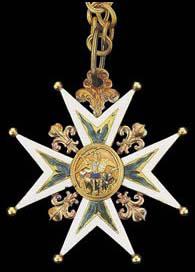Rona Robinson

Rona Robinson was born on 26th June 1884. She studied at Owens College and in 1905 she became the first woman in the United Kingdom to gain a first-class degree in chemistry. After leaving university Robinson researched dyes at her home, Moseley Villa, Withington.
Robinson went to work at the Altrincham Pupil-Teacher Centre where she taught Science and Mathematics. A fellow teacher was Dora Marsden. The women were both interested in women's suffrage and eventually joined the Women's Social and Political Union (WSPU).
In March 1909 Robinson and Marsden resigned from the Pupil-Teacher Centre to become paid organisers of the WSPU. Later that month she was arrested with Emily Wilding Davison, Patricia Woodlock and Helen Tolson, at a demonstration outside the House of Commons. It was reported in The Times: "the exertions of the women, most of whom were quite young and of indifferent physique, had told upon them and they were showing signs of exhaustion, which made their attempt to break the police line more pitiable than ever." Robinson was sentenced to a month's imprisonment.
On 22nd September 1909 Rona Robinson, Charlotte Marsh, Mary Leigh and Laura Ainsworth conducted a rooftop protest at Bingley Hall, Birmingham, where Herbert Asquith was addressing a meeting from which all women had been excluded. Using an axe, Leigh removed slates from the roof and threw them at the police below. Sylvia Pankhurst later recalled: "No sooner was this effected, however, than the rattling of missiles was heard on the other side of the hall, and on the roof of the house, thirty feet above the street, lit up by a tall electric standard was seen the little agile figure of Mary Leigh, with a tall fair girl (Charlotte Marsh) beside her. Both of them were tearing up the slates with axes, and flinging them onto the roof of the Bingley Hall and down into the road below-always, however, taking care to hit no one and sounding a warning before throwing. The police cried to them to stop and angry stewards came rushing out of the hall to second this demand, but the women calmly went on with their work."

As Michelle Myall has pointed out: "The police attempted to move the two women by, among other methods, turning a hosepipe on them and throwing stones. However, Charlotte Marsh and Mary Leigh proved to be formidable opponents and were only brought down from the roof when three policeman dragged them down."
Robinson, Mary Leigh, Charlotte Marsh and Laura Ainsworth were all sentenced to two weeks' imprisonment. On arriving at Winson Green Prison, on 22nd September, she broke the window in her cell in protest, demanding to be treated as a political offender. "Accordingly at nine o'clock in the evening I was taken to the punishment cell, a cold dark room on the ground floor - light only shines on very bright days - with no furniture in it." The four women decided to go on hunger-strike, a strategy developed by Marion Wallace-Dunlop a few weeks earlier. Wallace-Dunlop had been immediately released when she had tried this in Holloway Prison, but the governor of Winson Green Prison, was willing to feed the three women by force.
Mary Leigh later described what it was like to be force-fed: "On Saturday afternoon the wardress forced me onto the bed and two doctors came in. While I was held down a nasal tube was inserted. It is two yards long, with a funnel at the end; there is a glass junction in the middle to see if the liquid is passing. The end is put up the right and left nostril on alternative days. The sensation is most painful - the drums of the ears seem to be bursting and there is a horrible pain in the throat and the breast. The tube is pushed down 20 inches. I am on the bed pinned down by wardresses, one doctor holds the funnel end, and the other doctor forces the other end up the nostrils. The one holding the funnel end pours the liquid down - about a pint of milk... egg and milk is sometimes used."
On her release from prison, Rona attended a meeting at the ballroom, White City, Manchester, when along with Dora Marsden and Emily Wilding Davison she received the Women's Social and Political Union (WSPU) Hunger Strike Medal from Emmeline Pankhurst.

In October 1909, Robinson, Dora Marsden and Mary Gawthorpe decided to take part in another protest. According to Les Garner, the author of A Brave and Beautiful Spirit (1990): "Dressed in University gowns they entered the meeting and just before Morley began, raised the question of the recent forced feeding of women in Winson Green. There was an uproar, and the three were quickly bundled out and arrested on the pavement." This time they were released without charge.
Votes for Women reported on 8th October 1909: "No one who knows these three women graduates, or who glances at the numerous photographs which have appeared in the Press can fail to be struck with the pathos of the incident. Mary Gawthorpe, Rona Robinson and Dora Marsden are all slight, petite women who made their protest in a perfectly quiet and gentle manner... They are women moreover, who have done great credit to their respective Universities... Yet they are treated as "hooligans"; treated with such roughness that all 3 had to have medical attention, and hauled before a police magistrate and charged with disorderly behaviour."
In 1910 Robinson became a Gilchrist postgraduate scholar in Home Science and Economics at King's College for Women in Kensington Square. Robinson remained active in the struggle for women's rights and on 23rd November, 1911, she joined with Dora Marsden, Grace Jardine and Mary Gawthorpe to publish the first edition of The Freewoman. Marsden wrote: "The chief event of the week is our own appearance. The publication of The Freewoman marks an epoch. It marks the point at which feminism in England ceases to be impulsive and unaware of its own features and becomes definitely self-conscious and introspective. For the first time, feminists themselves make the attempt to reflect the feminist movement in the mirror of thought."
Rona Robinson wrote several articles for the journal. Other contributors included Ada Nield Chew, Guy Aldred, Teresa Billington-Greig, Rebecca West, H. G. Wells, Edward Carpenter, Havelock Ellis, Stella Browne, C. H. Norman, Edmund Haynes, Catherine Gasquoine Hartley, Huntley Carter, Lily Gair Wilkinson and Rose Witcup.
The articles on sexuality created a great deal of controversy. However, they were very popular with the readers of the journal. In February 1912, Ethel Bradshaw, secretary of the Bristol branch of the Fabian Women's Group, suggested that readers formed Freewoman Discussion Circles. Soon afterwards they had their first meeting in London and other branches were set up in other towns and cities. Robinson became involved in these activities and at one meeting gave a talk entitled "Abolition of Domestic Drudgery".
In 1915 Robinson joined J.B. & W.R. Sharpe Ltd. as an analytical and research chemist. The following year she was promoted to Chief Chemist. In 1920 she became Chief Chemist to the Clayton Aniline Company, where, according to the authors of Chemistry Was Their Life (2008) "three patents were issued with her as inventor, two of which were on aldehyde-amino condensation products". She held the post until her retirement.
Rona Robinson died on 7th April 1962.
Primary Sources
(1) Votes for Women (8th October 1909)
No one who knows these three women graduates, or who glances at the numerous photographs which have appeared in the Press can fail to be struck with the pathos of the incident. Mary Gawthorpe, Rona Robinson and Dora Marsden are all slight, petite women who made their protest in a perfectly quiet and gentle manner... They are women moreover, who have done great credit to their respective Universities... Yet they are treated as "hooligans"; treated with such roughness that all 3 had to have medical attention, and hauled before a police magistrate and charged with disorderly behaviour.
(2) Spink Medal Newsletter (June/July 2005)
Rona Robinson was the first ever woman to gain a first class BSc in the Honours School of Chemistry, Victoria University, Manchester in 1905; she went on to pursue a career as a research chemist.
She joined the Women's Social and Political Union (the Suffragettes) in its early years and was an organiser in the Manchester area at least as early as 1909 where she soon gained a reputation as an independent and single-minded operator which did not always meet with the full approval of the WSPU national leadership.
She first came to national prominence when she took part in a deputation to see Prime Minister Asquith in 1909, but later the same year was to achieve greater notoriety for her involvement in an incident that was widely reported in the national press. On 20 August, Minister of War Richard Burdon Haldane MP (later Lord Haldane) was due to speak at the Sun Hall, Liverpool. A group of seven women, including Rona, rented a house close to the Hall, which they occupied prior to the meeting. One of them, Mrs Leigh, climbed out of a window and onto the roof where, with the help of her colleagues, she tore off slates and bricks to hurl at the Hall windows. When Haldane rose to speak, a woman's voice rang through a megaphone calling attention to the Suffragette demand for votes for women. Haldane's opening sentences were then punctuated by a missile smashing one of the windows. More slates and bricks followed and windows were falling in everywhere. The Police were soon alerted. The culprits were arrested and immediately went on hunger strike. When brought before a Stipendiary Magistrate on the 24th, they pleaded guilty as charged of damage estimated at three pounds and nine shillings but insisted that their objectives were political not criminal. All were sentenced to terms of imprisonment in Walton Jail, where their hunger strike continued. After 123 hours without food, a doctor ordered that Rona be taken to hospital but she was released and nursed back to health 'to take her place once more in the fighting line'.
It is reported that after her release from prison, Rona attended at a memorable meeting at the ballroom, White City, Manchester, which probably took place at the very beginning of October, when along with Dora Marsden (another prominent Manchester WSPU comrade) and Emily Wilding Davison (later killed when she threw herself beneath the King's horse at the Derby) she received her WSPU Medal from Mrs Pankhurst herself. This must have been one of the very first Hunger Strike Medals to be awarded, as Marion Dunlop-Wallace, the first WSPU woman to go on hunger strike (91 hours), had only done so some six weeks earlier.
Rona was next arrested in Manchester on 4 October 1909 together with two other university women while convening outside Victoria University Building, Manchester, from which they had been evicted. Wearing their university robes, they had just attended a meeting presided over by Lord Morley, the Chancellor, an occasion on which, before he could take his seat, the three had questioned him concerning the condition of a number of women being force-fed in Winsom Green prison, Birmingham. They were charged with disorderly conduct but these charges were later dropped.
Rona's second period of imprisonment the same year resulted from a summons issued against her in respect of damage to prison property (seven panes of glass to the value of one shilling and six pence) arising out of her time in Walton Prison. When arrested in Manchester, she was seen by a doctor who diagnosed laryngeal catarrh and a weak and irregular action of her heart. He advised that a hunger strike or force-feeding would be very dangerous. Rona appeared before a Stipendiary Magistrate after transfer to Liverpool and found a second charge had been added. This claimed that she had broken more cell windows during her current arrest and had caused damage of two shillings. The second count was dropped by the Magistrate but she was found guilty of the first and fined, with the alternative of 14 days imprisonment. Inevitably she took the latter option and once more she refused all food. After 72 hours, she was released in a very weakened state having suffered from sleeplessness, headaches and violent sickness.
In later life she blamed her poor health on her hard experiences in prison.
(3) Les Garner, A Brave and Beautiful Spirit (1990)
Dora Marsden's feminism was not solely expressed through her public activity as a suffragette but was reflected too in her personal life which was so clearly woman-centred. With her mother providing a permanent base, Dora developed close and loving relationships with women in this period, primarily Rona Robinson, Grace Jardine and Mary Gawthorpe. Dora's relationship with the brilliant Rona went back to Owen's and was cemented at the Teachers Centre in Altrincham. They resigned their jobs together and, for a time, were joint organizers in Manchester. However, by 1910, Rona had become a Gilchrist postgraduate scholar in Home Science and Economics at Kings' College for Women." Their friendship continued but suffered through being physically distant, with Dora in Southport and Rona in London....
All her close relationships were with women, none with a man. Indeed, how could she have the independence and freedom she so desperately yearned for if she had become involved in an orthodox relationship with a man? Whether any of her friendships with women were sexual cannot be determined - certainly they were close and certainly too, Dora's personality and fragile beauty inspired many endearing comments from her friends. She appeared to have a special and unique quality that inspired devotion, if not awe, in some women.... Whether Dora was gay in the modern sense is unknown. There is no concrete evidence to support such a claim.

